redfisher1139
Aquarium Advice Freak
Mine is my Bloodfin Tetras. They spook at the autofocus light, but I finally got a few good ones tonight!!!
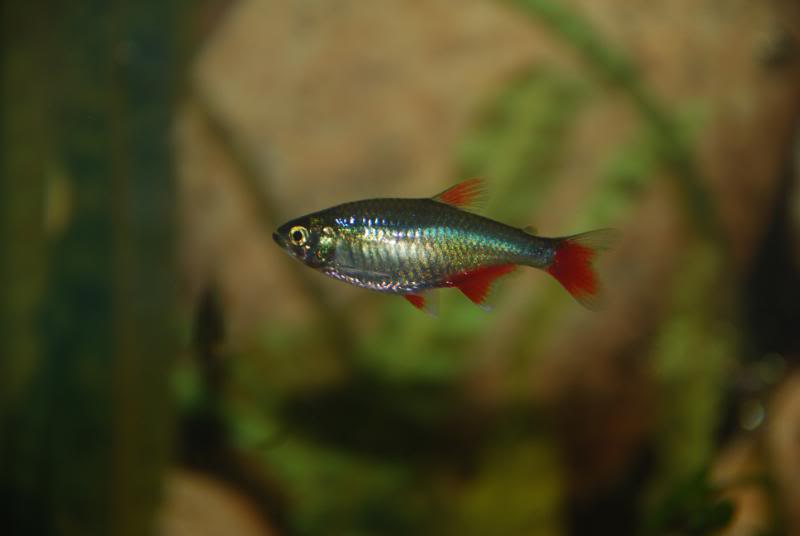
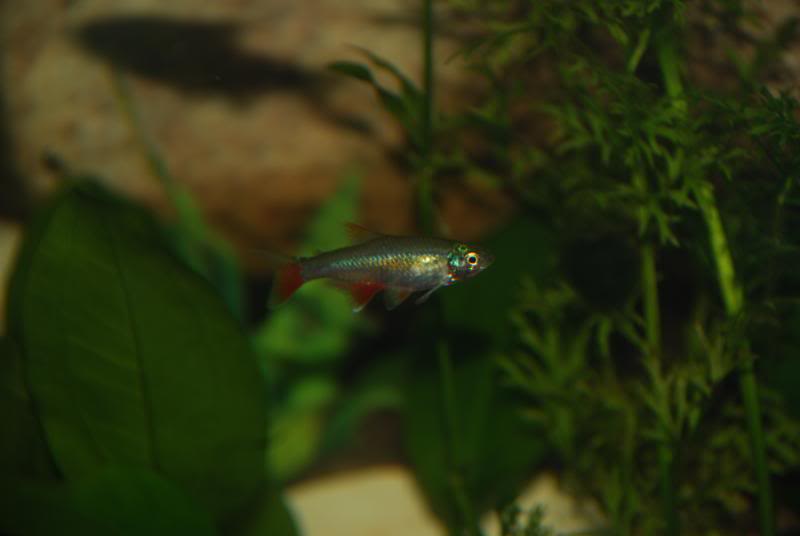
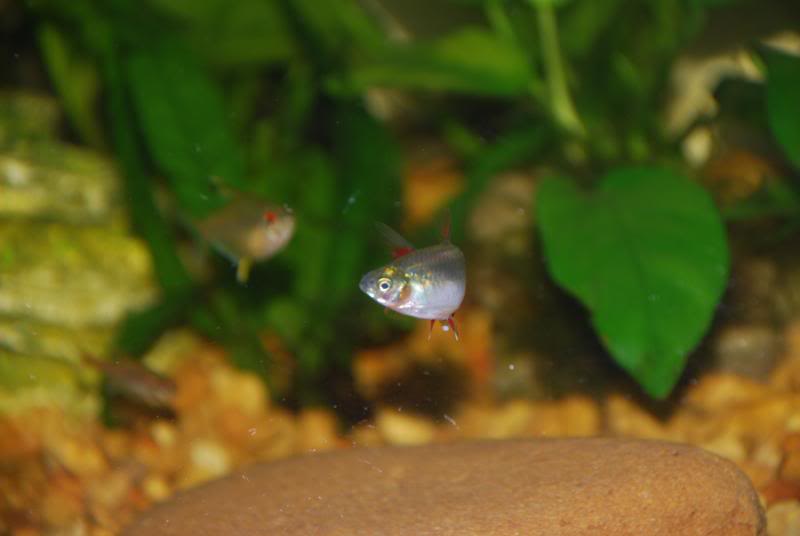
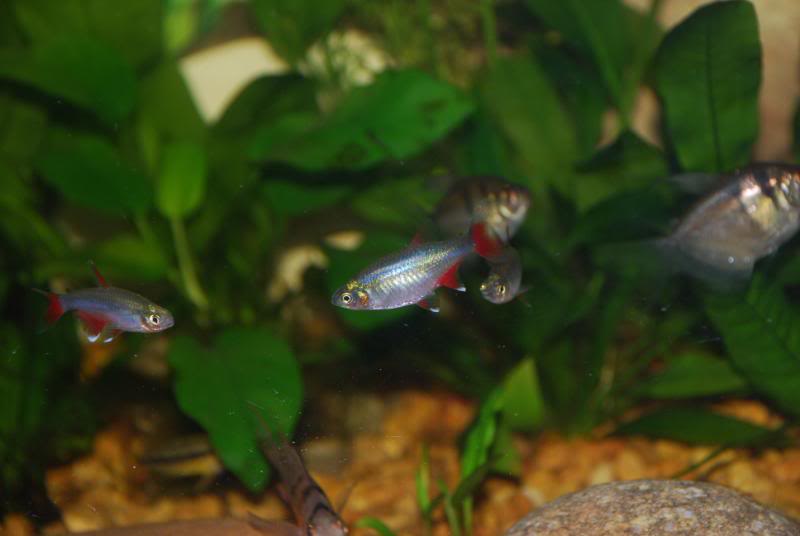








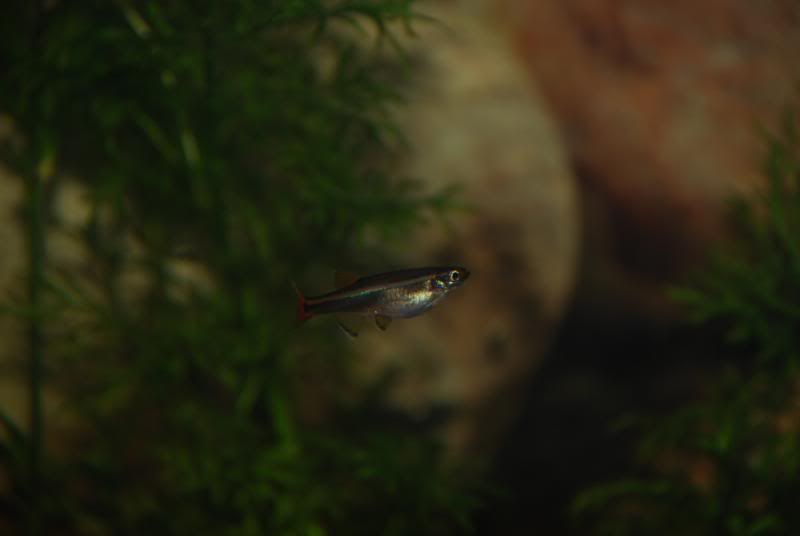
My God.
I'm a professional photographer. I know my way around a camera. But these fish are, (a) fast, and (b) I can't say I've ever tried taking pictures through glass before. I also think I don't have the right focal length for a lens to do the job.
This is going to take more serious work on a day when it's sunny and I can open all the windows, turn on all the lights, and turn my shutter speed up really fast. These guys are quick!I have newfound respect for anyone who can get a sharp photo of their fish!
I also now slightly regret the bowfront tank. Focusing, even manually, through the curve is pretty tricky!
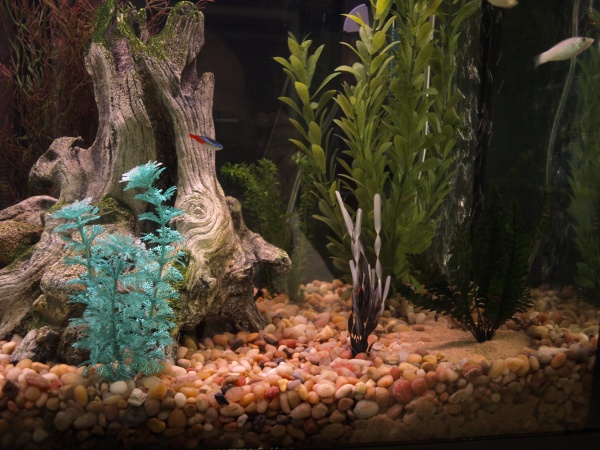
The biggest problem I have is definitely the flash. To catch any of my fish clearly, I need a fast shutter speed and a lot of light. Trying to get that light using the flash usually creates ugly shadows that I hate. I know I should invest in some good aquarium lighting for plants, but I may need to do it just to take pictures!
I'm not a professional photographer, but I am taking a photography class right now. The one problem with having all that external light is that it will be reflected by the glass in the picture. I recently tried the same thing and all you can see are the reflected images in the glass. I really think the light has to come from up above. In fact, the best pictures I've been able to take required me shutting all the curtains, dimming the inside external lights and using no flash. The key for me is the aperture setting.
This just happens to be one example.

WOW!! Good advice across the board, but my thread seems to have gotten sidetracked a bit!!
I use something closer to 30 or 40 ISO. Then again my lights are T5HO and the last picture in my first post is what things look like in my tank at that ISO. A lower ISO in my experience lets you take nicer shots of fish because there's less chance of graininess due to a small aperture, additionally there's less glare and less blurring when the fish move. But I'm not photographer, so that's the extent of my knowledge.
